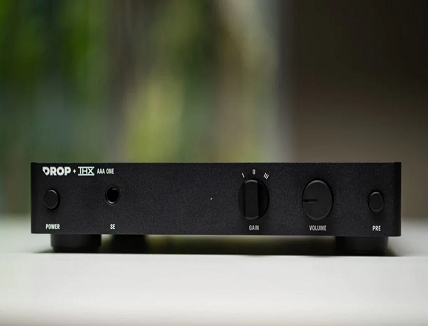
As an electronic circuit, a linear amplifier delivers more power to a load than its input, while keeping its output proportional to its input. An amateur radio power Amplifiers is a radio frequency (RF) amplifier with a kilowatt output power, the term usually referring to one of these types.
Audio is a technical term and the term audio has been used as a general description of sound-related devices and their role within the audio range. All sounds that can be heard by humans are called audio, which may include noise etc. Once a sound has been recorded, whether it is a speaking voice, a song, an instrument, it can be processed by digital music software or made into a CD, at which point all the sounds remain unchanged, as a CD is originally a type of audio file. And audio is just sound stored in a computer. With a computer and a corresponding audio card – what we often call a sound card – we can record all the sounds and the acoustic characteristics of the sound such as the pitch of the tone can be stored as a computer hard disk file.
The size of China’s online audio industry is currently 12.3 billion yuan, still in a rapid development stage. With the development of audio service types represented by audiobooks, podcasts and live audio streaming, the whole industry is still in a thriving development situation.
In the content provision and tools segment, content providers and tools such as audiobooks, podcasts and audio live streaming show different characteristics; in the audio distribution segment, competition among comprehensive audio platforms is still present, and companies from other music and reading fields have also entered the market, and a number of companies focusing on specific audio categories have emerged; in the hardware listening segment, smart hardware and offline scene providers have also carried out cooperation with audio companies In the hardware listening segment, smart hardware and offline scene providers are also collaborating with audio companies.
In terms of the number of new Chinese podcasts, the number of Chinese podcasts showed explosive growth in 2020. With the outbreak of the new crown epidemic, people’s social distance was instantly stretched and podcasts became a medium for people to communicate with each other, and the intimacy and companionship of the sound itself became a powerful means to eliminate people’s loneliness during the epidemic.
In terms of the competitive landscape of integrated audio platforms, there are three main online audio platforms at the head, namely Himalaya, Dragonfly FM and Lychee. From early 2020 to mid-2021, the number of monthly unique devices of the top online audio platforms shows some changes due to the impact of some emerging integrated audio, but the top three still hold 75%-85% of the market share. In terms of revenue structure, Himalaya and Dragonfly FM, which focus on PGC+PUGC, have membership and subscription revenue as their main sources of revenue, while Lychee is dominated by revenue from live user bounties. Charging users has gradually become one of the main sources of revenue for integrated audio platforms.
Currently, people listen to audio mainly by wearing headphones, but wearing headphones is a kind of listening hardware that isolates external sound, which affects people’s verbal communication to a certain extent. By importing audio content into offline life scenes such as shops, properties and shopping centres, the ability to receive different audio sources at the same time activates those life scenes to a certain extent and facilitates the spread of audio content.
In terms of user size, the number of podcast users in China reached nearly 70 million in 2020 and is still growing at a high rate, and is expected to exceed 100 million by 2022. In comparison, the US will already have 100 million podcast users in 2020, with a much higher penetration rate than China. In contrast, China still has a high potential for future growth in user size.
As of now, podcasts are still individual and largely “for the love of it”, with little commercial success. As podcasting becomes more accepted by the public, there are a number of podcast brokerage companies, such as Justpod, whose businesses range from managing podcasts, to commercialising podcasts and training podcasters. The emergence of podcast economy companies not only shows that the podcast industry is thriving, but also provides the conditions for future development of services and products derived from podcast hosts and podcast IPs.
Live audio, compared to live video, places more emphasis on the social and companionship attributes. Live video has moved away from the original live show and has been combined with many other elements to form categories such as corporate live streaming and live gaming. Audio live streaming itself has the characteristics of accompaniment and emotion, and there are new possibilities for future development, from the current rise of voice chat, to the voice games that are now taking shape, and the AMSR that is still wandering on the edge of the non-mainstream, all these formats can prove that there are diverse possibilities for audio live streaming.
More specific information can be found here.


















